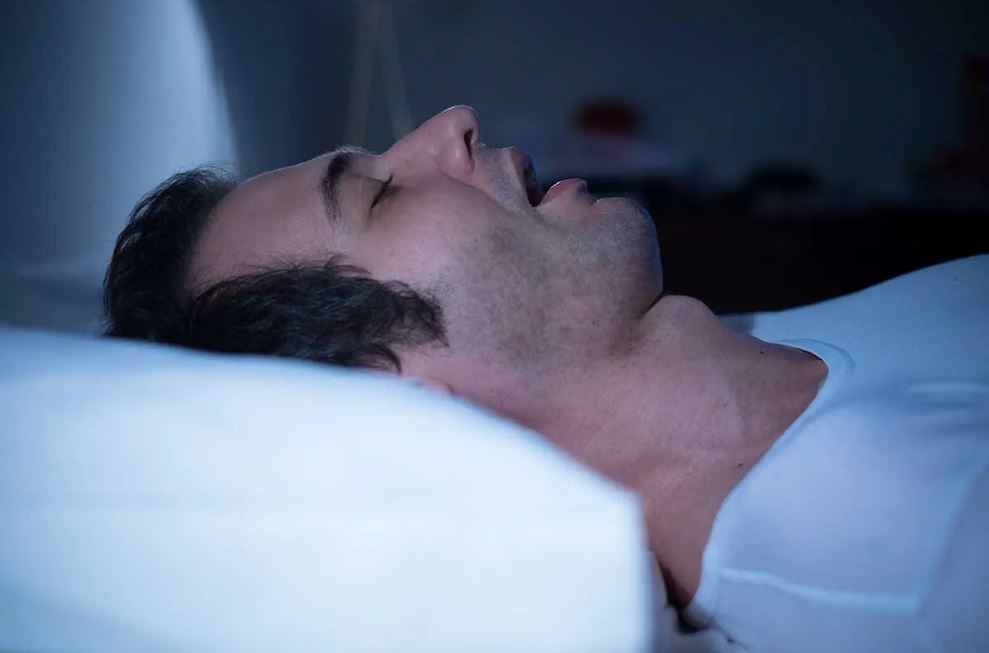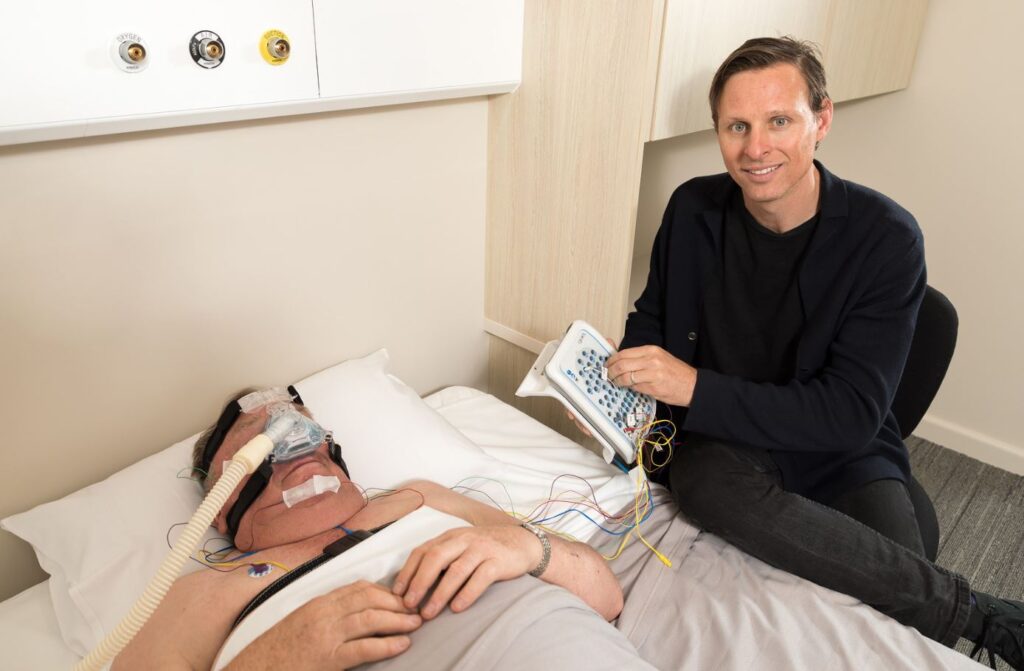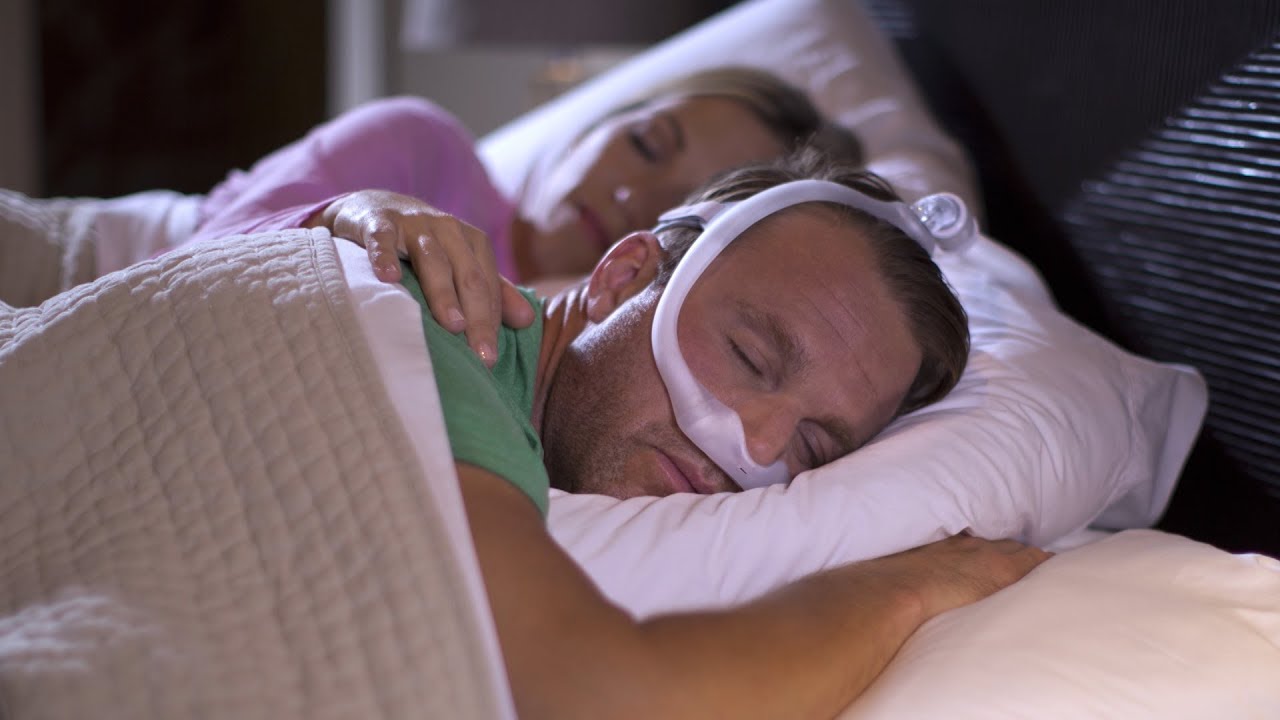Most people with sleep apnea will also need to make lifestyle changes and seek treatment that helps keep the airway open while they are sleeping.
The most effective treatment now available for moderate to severe sleep apnea is continuous positive airway pressure, or CPAP therapy.
How does a CPAP device work?
A CPAP machine is a device that uses a hose and an airtight nosepiece or mask to provide a continuous stream of air while you sleep. The air pressure keeps your airway open, preventing breathing pauses.
Some people find it challenging to fall asleep when using a CPAP machine. But after a period of adjustment, the majority of people finally learn to sleep well. Giving CPAP therapy a true shot is beneficial since you’ll often experience immediate symptom relief and a notable boost in your mental and physical energy.
The most recent CPAP technology is more comfortable, lighter, and quieter than older ones. Technology for CPAP is always being updated and enhanced. Even if you’ve already given up on them, you owe it to yourself to give them one more try. Need to read more about Frequently asked questions on CPAP machines by clicking here.

Advice and CPAP troubleshooting
It could take some time to become used to sleeping with a CPAP machine. It’s natural to miss sleeping the “old way,” but there are things you can do to make the adjustment easier and make sure your treatment is working its hardest for you.
Make sure your mask fits comfortably.
When it comes to CPAP therapy, one size does not fit all. It’s important to get a mask that fits well and is comfortable for you.
There are many different types of masks, some of which just cover the nose while others enclose the whole face. To accommodate a range of face forms, masks come in a number of sizes. There are other options that allow you to sleep in any position, can accommodate glasses, and won’t fall off if you toss and turn.
After discussing your options with your doctor, set up follow-up appointments to check the fit, gauge how your treatment is going, and, if necessary, modify or replace your mask.
Getting used to your CPAP device
Breathe easily. Start by using your CPAP machine for small periods of time. Try wearing it while sitting up in bed for a half- or full-hour to watch TV or read a book. Try it while you’re drifting off to sleep or lying down after you’ve become accustomed to it.
Choose the ramp setting. The majority of equipment may be configured to gradually increase air pressure after a slow start. You should try to get some shut-eye before the machine reaches the pressure level that is ideal for you. Most people find that doing so greatly eases and enhances their ability to fall asleep.
Reset the device if air flow wakes you up. If a powerful jet of air wakes you up, switch the CPAP machine on and off to reset the ramp setting.
Guidelines to improve health and comfort
Choose a CPAP device with a built-in humidifier. The inbuilt humidifier included in the majority of current devices reduces the chance of skin irritation and dryness.
If you have nasal congestion, a full-face mask may be preferred than a nasal or nasal cushion mask. Make sure that your mask, tubing, humidifier tank, and all of these components are constantly clean and full. Nasal sprays and antihistamines are also helpful.
Take care of your PC. Regular cleaning of your CPAP hose, nosepiece or mask, and humidifier tub is essential since dirty CPAP equipment may cause infections, including pneumonia. Your sleep doctor and the gadget manufacturer will also provide you with detailed cleaning instructions.
As well as soft pads to diminish skin irritation and nasal cushions to help discomfort in the nose, ask your doctor about chinstraps to keep your mouth closed and reduce throat irritation and dry mouth.
the CPAP machine’s noise is muted. Most contemporary CPAP machines are quiet, but if noise is an issue for you, think about placing the machine underneath the bed and using a sound machine to drown out the noise.
Additional positive pressure respiratory equipment
In addition to CPAP, a sleep specialist may recommend other devices to treat sleep apnea.
Single-use Expiratory Positive Airway Pressure (EPAP) devices fit over the nostrils and are less bulky and intrusive than CPAP machines to help keep the airway open. These may be helpful for those with moderate to severe obstructive sleep apnea.
Bilevel positive airway pressure (BiPAP, sometimes referred to as BPAP) devices may be used by persons who have trouble getting acclimated to CPAP or by those with central sleep apnea who need assistance with a weak breathing pattern.
This device automatically adjusts the pressure as you sleep, increasing pressure during inhalation and decreasing pressure upon exhalation. Some BiPAP systems will also deliver a breath if the mask detects that you haven’t taken one in a certain number of seconds.
With the use of adaptive servo-ventilation (ASV) devices, both central and obstructive sleep apnea may be treated. The ASV device captures data about your regular breathing pattern and automatically adjusts airflow pressure to prevent breathing pauses while you’re sleeping.
Utilizing oral appliances
Using specialized dental appliances to treat sleep apnea is becoming more and more popular. Even though they aren’t as effective as CPAP therapy, they are a good option if you can’t use a CPAP equipment since most people find them more comfortable.
Although there are several more oral appliances that may be used to treat sleep apnea, the bulk of them are made of acrylic and are either designed to go around your head and chin to alter your lower jaw’s position or to fit within your mouth like a mouth guard for athletics.
Two common oral appliances are the mandibular advancement device and the tongue holding device. These devices allow you to breathe more easily as you sleep by advancing your lower jaw or tongue.
Given the large range of gadgets available, it could take some experimentation to find the appliance that suits you the best. Additionally, it’s essential to see the dentist periodically to check for any problems and have the mouthpiece changed as necessary. The mouthpiece should be placed by a dentist who specializes in treating sleep apnea.
Other negative consequences of oral appliances include pain, saliva accumulation, damage to or long-term alterations in the position of the jaw, teeth, and mouth. They could be more harmful in improperly mounted devices.

Treatment Alternatives
There are several sleep apnea treatments available. Your unique circumstances, such as the severity, underlying cause, and type of your sleep apnea, will determine the best course of action for you.
Assisted Technologies
The initial line of treatment for sleep apnea is often positive airway pressure (PAP) therapy. With minor sleep apnea or when dental appliances are necessary, there may be exceptions.
A mask that covers the mouth and nose and provides airflow to maintain the upper airway’s openness is a component of all PAP devices.
PAP treatment equipment comes in a few distinct varieties. The two most typical kinds are:
- Continuous positive airway pressure (CPAP): Known as the “gold standard” therapy for sleep apnea, CPAP has been shown to be successful in symptom reduction and quality-of-life enhancement. Continuous airflow at a single pressure is required. Other PAP devices and treatments could be investigated, however, if a person cannot tolerate CPAP properly.
- Bi-level positive airway pressure (BiPAP): Similar to CPAP devices, BiPAP machines use two distinct air pressures for breathing and exhaling.
If CPAP treatment is not tolerated, a BiPAP machine may be considered. Additionally, it is a more effective method of treating central sleep apnea.
Dental appliances and oral mandibular advancement devices are two other forms of sleep apnea supportive devices. These may move the lower jaw forward or prevent the tongue from obstructing the upper airway, depending on the demands of the person.
The Food and Drug Administration (FDA) has authorized more than 100 oral appliances to treat sleep apnea. For mild-moderate sleep apnea, especially developed oral mandibular advancement devices are useful.
Some patients may choose dental appliances to PAP treatment since they are less intrusive, often more inexpensive, and frequently more pleasant.
When used regularly and appropriately, PAP treatment is quite beneficial, but it does not treat sleep apnea. If PAP treatment is stopped, apnea episodes will recur.
You need a range of gadgets
Given the large range of gadgets available, it could take some experimentation to find the appliance that suits you the best. Additionally, it’s essential to see the dentist periodically to check for any problems and have the mouthpiece changed as necessary. The mouthpiece should be placed by a dentist who specializes in treating sleep apnea.
Side effects of gadgets
Other negative consequences of oral appliances include pain, saliva accumulation, damage to or long-term alterations in the position of the jaw, teeth, and mouth. They could be more harmful in improperly mounted devices.
Positional Therapy
Sleep apnea is less likely to occur if you sleep on your side or stomach. But you’re more likely to have issues if you sleep on your back. You may avoid resting on your back and lessen the need for a CPAP machine by using devices that connect to your waist or back.
Sleep apnea symptoms include breathing erratically while you sleep, gasping for air when you wake up, and feeling too drowsy throughout the day.
Sleep apnea comes in three different forms. Obstructive sleep apnea is the most prevalent kind of sleep disorder (OSA). In the US, between 2% to 9% of adults and around 2% of children are affected with OSA. If you have this respiratory condition, you have sleep-related breathing interruptions2. During sleep, you can snore, gulp, choke, or snort. Your body’s reactions can cause you to become awake.
A considerably less common form of sleep apnea is central sleep apnea (CSA). The area of the brain that regulates breathing is to blame for the breathing problem rather than the airway itself. A prominent sign of CSA is a recurring cycle in which your breathing increasingly slows until it eventually stops entirely for a short period of time.
Your doctor could advise using a continuous positive airway pressure (CPAP) machine as therapy if you are found is sleep apnea dangerous. Your airway will remain open while you sleep thanks to the compressed air provided by a CPAP machine. Patients who regularly use a CPAP machine report higher quality of life and less cognitive impairment. Additionally, CPAP treatment may lower blood pressure.
CPAP devices are not the sole therapy for OSA, however. The best therapies for you may be determined by your doctor.
Why you should consider non-CPAP sleep apnea treatment
There are several reasons why people with OSA look for CPAP alternatives:
Price:
The machine’s out-of-pocket price ranges from $250 to more than $1,000. You are often obliged to sign up for a rent-to-own plan3 with stringent compliance conditions if you utilize insurance to purchase a CPAP machine.
Compliance Conditions:
Users of CPAP machines are required by insurers like Medicare to comply with a 30-day compliance period4, using the device for at least 4 hours a night on 70% of the nights. Patients who find it difficult to comply with these regulations may feel their privacy is being violated.
Consequences:
CPAP users have different side effects. Others report discomfort from the mask,5 as well as dry mouth, red or itchy eyes, and a dry, stuffy, or runny nose. The sound produced by mask leaks may disturb CPAP users and their bed companions. Adherence is affected by each of these adverse effects.
Adherence:
CPAP machine adherence rates may be as low as 50%.
Exercise and Loss of Weight
A risk factor for OSA is obesity. According to research, considerable weight reduction lessens OSA’s severity. According to one research, a diet adjustment combined with at least three hours of moderate activity per week may help people with OSA lose weight. Another study found that bariatric surgery may lessen OSA severity. When seeking medical therapy for obesity, patients should see an endocrinologist or expert in obesity medicine.
Patients who alter their sleeping postures as well as their weight find greater improvements than those who merely do so. However, OSA cannot be entirely cured by weight reduction alone.
Sleep Position
Having more apnea episodes each night is associated with sleeping supine, or on your back with your face up toward the ceiling. Your tongue and larynx may restrict your breathing if you have OSA and sleep on your back. According to one research, roughly 62% of OSA patients also had supine-predominant sleep apnea.
To lessen the effects of OSA, specialists advise sleeping on your side rather than your back. Patients who use gadgets that inform them while they are lying on their backs have fewer apnea episodes, according to studies. The technology itself must be improved, and adherence to the usage of these devices is a problem.
Inspire therapy.
The Inspire implant “may be a game changer for people who have tried and failed to cure their sleep apnea with all sorts of stuff,” adds Yaremchuk. This is how it goes: A tiny generator, a breathing sensor lead, and a stimulation lead are inserted into a patient’s chest via three chest incisions. The gadget works to detect breathing patterns and stimulate certain muscles to open a person’s airway when a user switches it on before bed. The battery-powered gadget has an eight-hour battery life and was given FDA approval in 2014.
- Patient eligibility requirements for Inspire Therapy include the following:
- You suffer from mild to severe Obstructive snoring
- You are unable to utilize or benefit from CPAP on a regular basis.
- Your BMI can’t be higher than 32, thus you are not very obese.
- You are older than 22 years old.
Speaking with your doctor about whether or not Inspire is a suitable match for you is crucial, according to Yaremchuk, since an outpatient treatment to treat sleep apnea may not be an option for many people.
Yaremchuk adds, “I usually tell clients that I don’t want to undertake a procedure that takes four hours and doesn’t function. And you don’t want to have a four-hour procedure that is unsuccessful.
Final thoughts
Relief from sleep apnea may take many different forms, allowing you to maintain a healthy, productive life with a regular sleep schedule.



